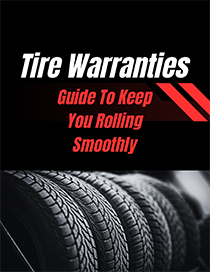How Fall Weather Affects Your Tires (and What You Can Do About It)
As fall sets in, tire care becomes more important than ever. With cooler temperatures, changing road conditions, and the potential for wet and icy surfaces, your tires need to be in top shape to ensure your safety on the road. The drop in temperature and the shift in weather patterns affect your tires in different ways. Here’s what you need to know about how fall weather impacts your tires and what you can do to keep them in optimal condition.
1. Cold Weather and Tire Pressure
Cooler temperatures are one of the most significant factors that affect tire pressure. As the air gets colder, the air inside your tires contracts, leading to a decrease in pressure. Even small changes in tire pressure can have a noticeable impact on your car’s performance. Under-inflated tires increase rolling resistance, which can lead to reduced fuel efficiency and poor handling.
To avoid these issues, it’s important to check your tire pressure regularly during the fall. Ideally, do this in the morning before you drive, as the tires will be cooler and pressure readings will be more accurate. If your tires are low, top them up with air to match the manufacturer’s recommended psi (usually listed on a sticker inside the driver’s side door or in the vehicle’s manual).
2. Tire Tread and Wet Roads
Fall is notorious for rainy weather, which can create slick, wet roads. As water accumulates on the road, it can lead to hydroplaning, where your tires lose traction and float on the surface of the water. This can be dangerous, especially at higher speeds.
One of the best ways to ensure your tires are up to the task of wet fall roads is to check the tread depth. Tread depth is crucial for channeling water away from the tire, allowing for better grip. If your tires are worn down, they’ll be less effective at clearing water from the road surface, increasing the risk of losing control.
Use the penny test to check your tread depth. If the tread is worn down past 2/32 of an inch, it’s time to replace the tires. In addition, make sure your tires are properly inflated to maximize their ability to handle wet conditions.
3. Seasonal Tire Changes: All-Season vs. Winter Tires
While fall might not be the time for heavy snowfall, it’s still a good idea to consider whether your current tires are up to the challenge of cooler temperatures and slick conditions. All-season tires are designed to perform well in a variety of weather conditions, but they can lose effectiveness in colder temperatures or on icy roads.
If you live in an area that experiences snow and ice in the winter, consider switching to winter tires before the first freeze. Winter tires are made of a softer rubber compound that remains flexible in low temperatures, providing better grip on icy and snowy roads. They also feature deeper treads and specialized patterns that improve traction in winter weather.
4. Dealing with Falling Leaves
As beautiful as fall foliage can be, fallen leaves on the road can create their own set of challenges for drivers. Wet, decaying leaves can be just as slippery as ice, especially in areas where morning frost is common. These leaves can create a slick, unpredictable surface on roads, particularly in shaded or rural areas.
To avoid slipping, slow down and increase your following distance when driving on leaf-covered roads. In addition, make sure your tires have good tread and are in proper condition to handle any unexpected loss of traction. Avoid sharp braking or quick acceleration when navigating these surfaces, as these actions can easily lead to a loss of control.
5. Avoiding Potholes and Road Debris
After months of summer heat, fall weather often brings a resurgence of potholes and road debris. Rain and cooler temperatures can cause roads to crack, leading to potholes that can damage your tires. Hitting a pothole at high speed can cause tire blowouts, punctures, or bent rims.
When driving in the fall, be extra cautious about road conditions. Slow down on unfamiliar roads, especially after heavy rain, and always keep an eye out for visible potholes or debris. If you do hit a pothole, inspect your tires afterward for any visible damage, such as bulges or cuts in the sidewall.







